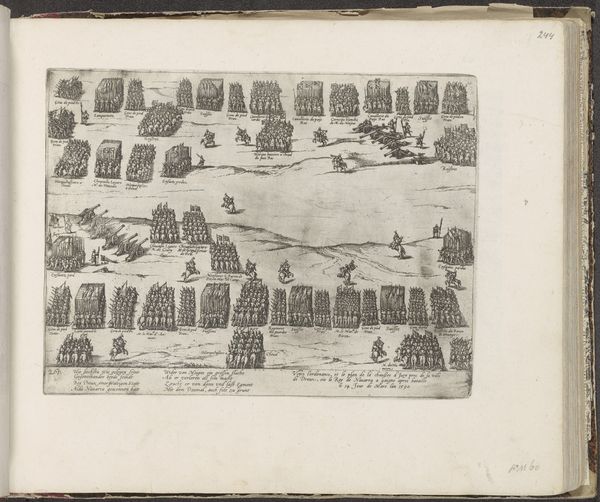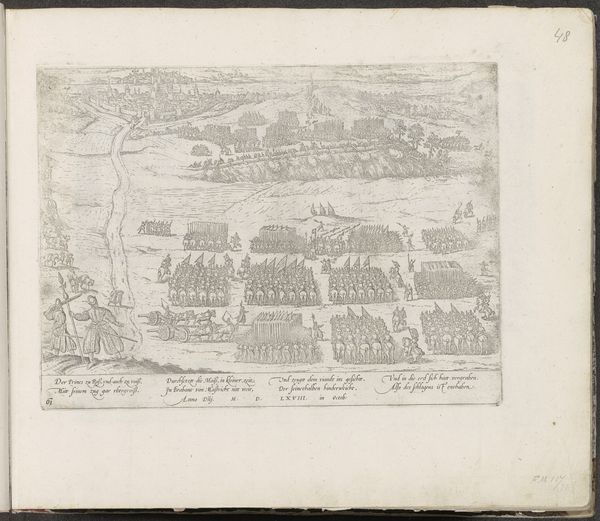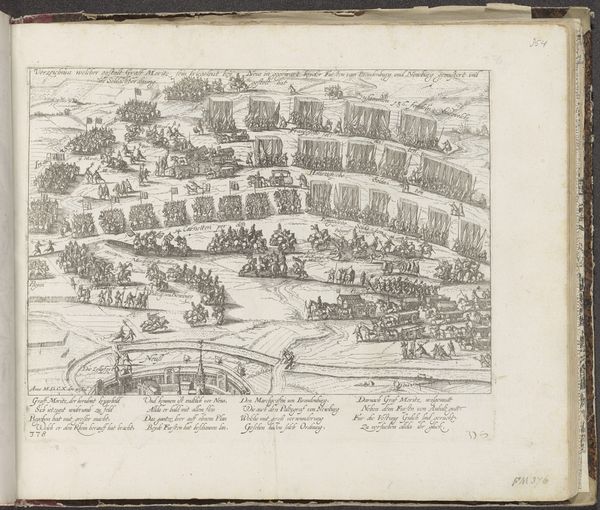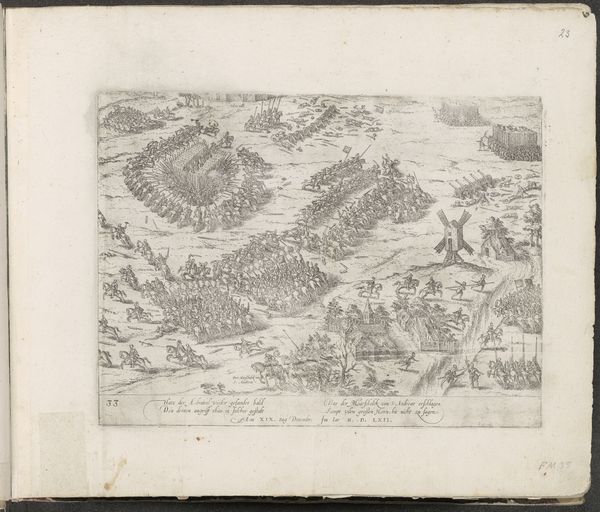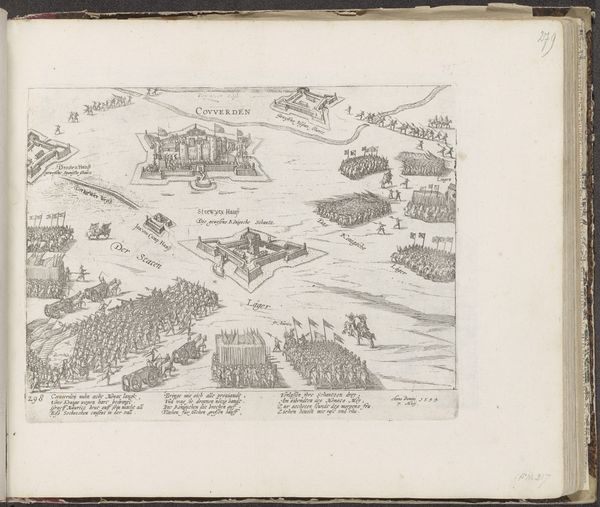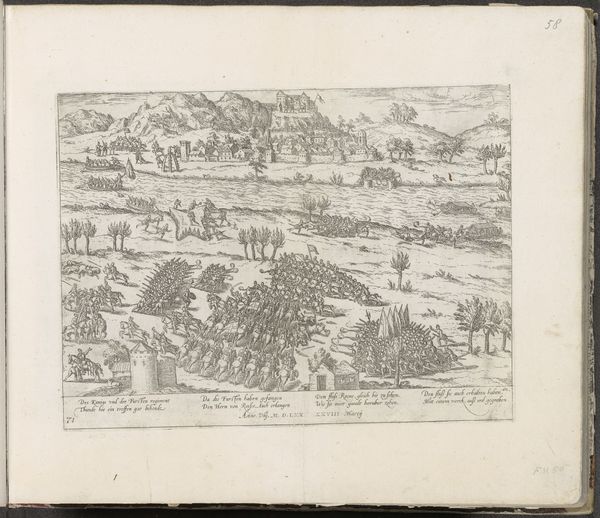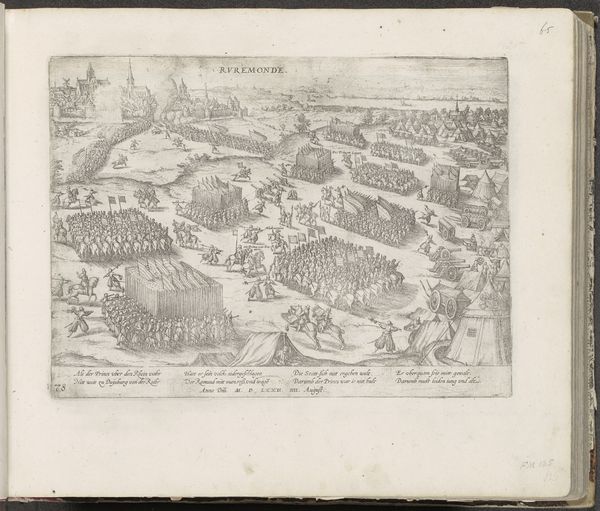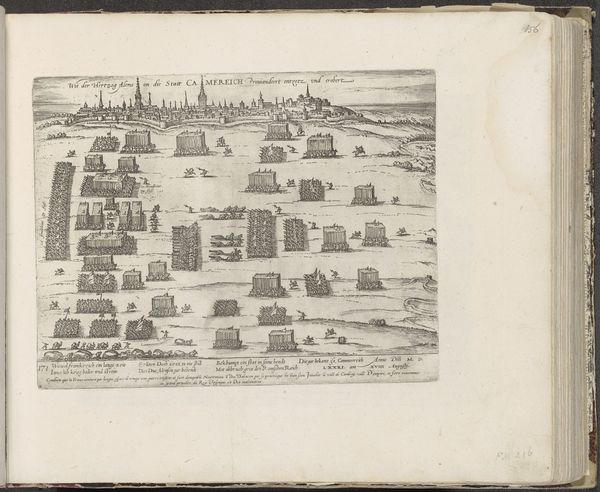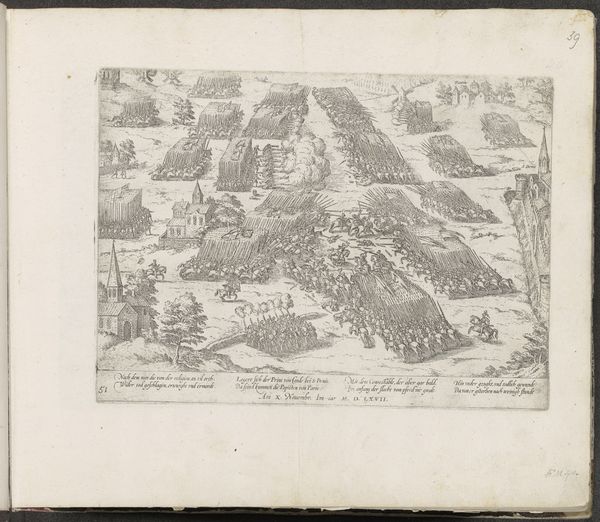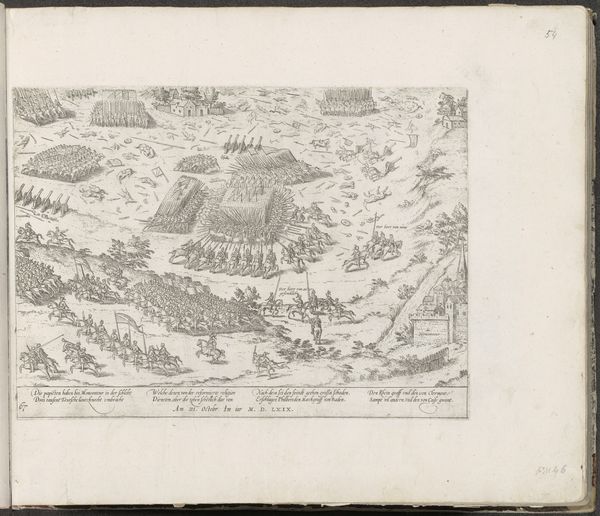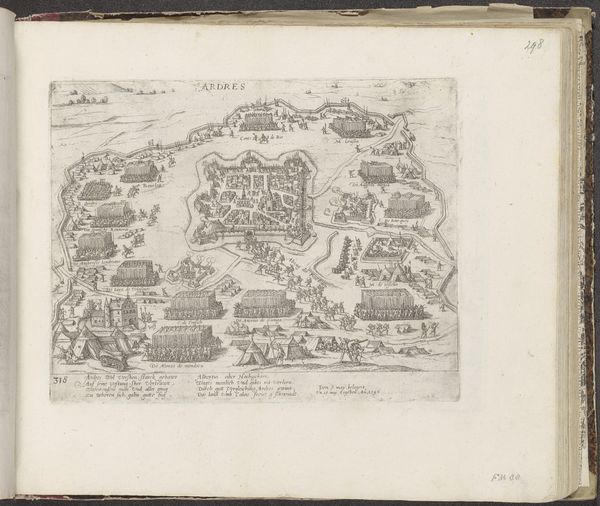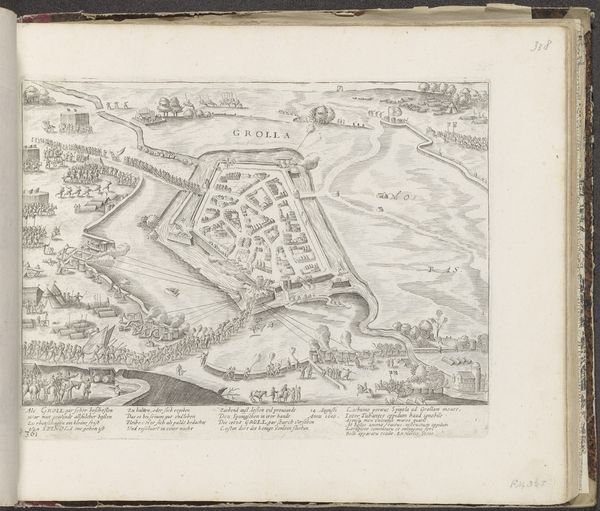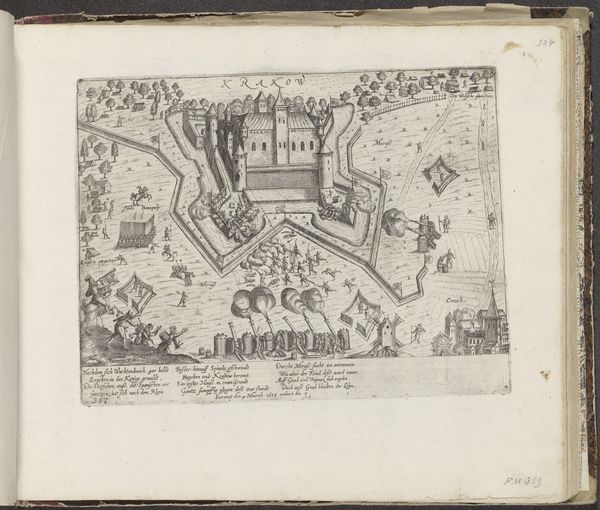
print, engraving
# print
#
mannerism
#
genre-painting
#
history-painting
#
engraving
Dimensions: height 212 mm, width 276 mm
Copyright: Rijks Museum: Open Domain
Curator: Looking at this piece, I'm instantly reminded of ants, painstakingly organized and bustling with unseen purpose. What's your first take? Editor: A map come to life, almost! We're looking at "Matthias bezoekt het Staatse leger, 1578" which translates to "Matthias visits the States Army, 1578", an engraving dating back to around 1581-1585, crafted by Frans Hogenberg. The Rijksmuseum holds this delicate dance of lines. Curator: A dance indeed, but a war dance! All those miniature figures aligned in perfect rows and formations; the repetitive pattern almost hypnotic. It feels like a military mind at work, documenting power. The kind of visualization exercise favored by military strategists. What symbolism stands out to you here? Editor: The organization itself. You have these almost rigid structures – the blocks of soldiers, each little figure facing forward, unwavering. But within that rigidity, there’s dynamism. The movement of the approaching army suggests inevitability, destiny almost. And of course, Matthias, the central figure, acts as an important icon, an endorsement or recognition of the army's capabilities and resolve. Curator: It's also striking that, while we see so many people, we're kept at a distance. The effect is alienating, like a general surveying a battle map devoid of any feeling of its potential bloodshed. We're forced into this clinical, observational space – which maybe says something about how conflict can be processed from the distance of power. Editor: Exactly! Hogenberg offers not just a historical record, but a study of perspective – a way of comprehending complex socio-political structures through precise visual metaphor. His work resonates with the broader currents of Mannerism that celebrate a stylized aesthetic through complex, allegorical subjects. Curator: A fascinating reflection, indeed. From my point of view, it encapsulates something of the period's mania for order and control amid an increasingly chaotic world. The image presents a cool and somewhat inhuman response to the great upheaval of 16th century. Editor: A fittingly conflicted end-note on this tiny, compelling document! A landscape not just of armies, but of ideas.
Comments
No comments
Be the first to comment and join the conversation on the ultimate creative platform.
